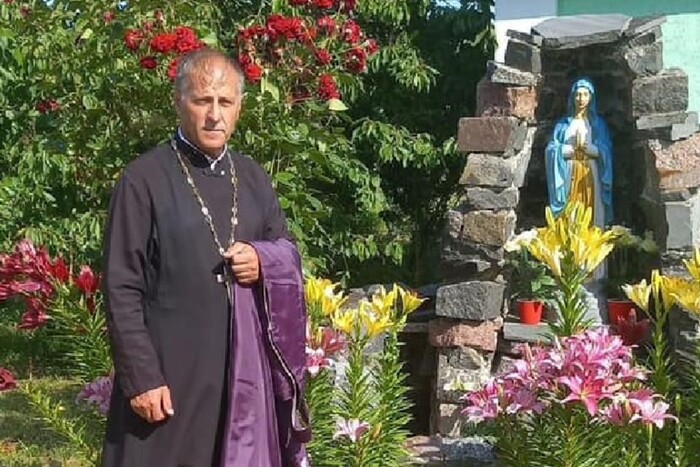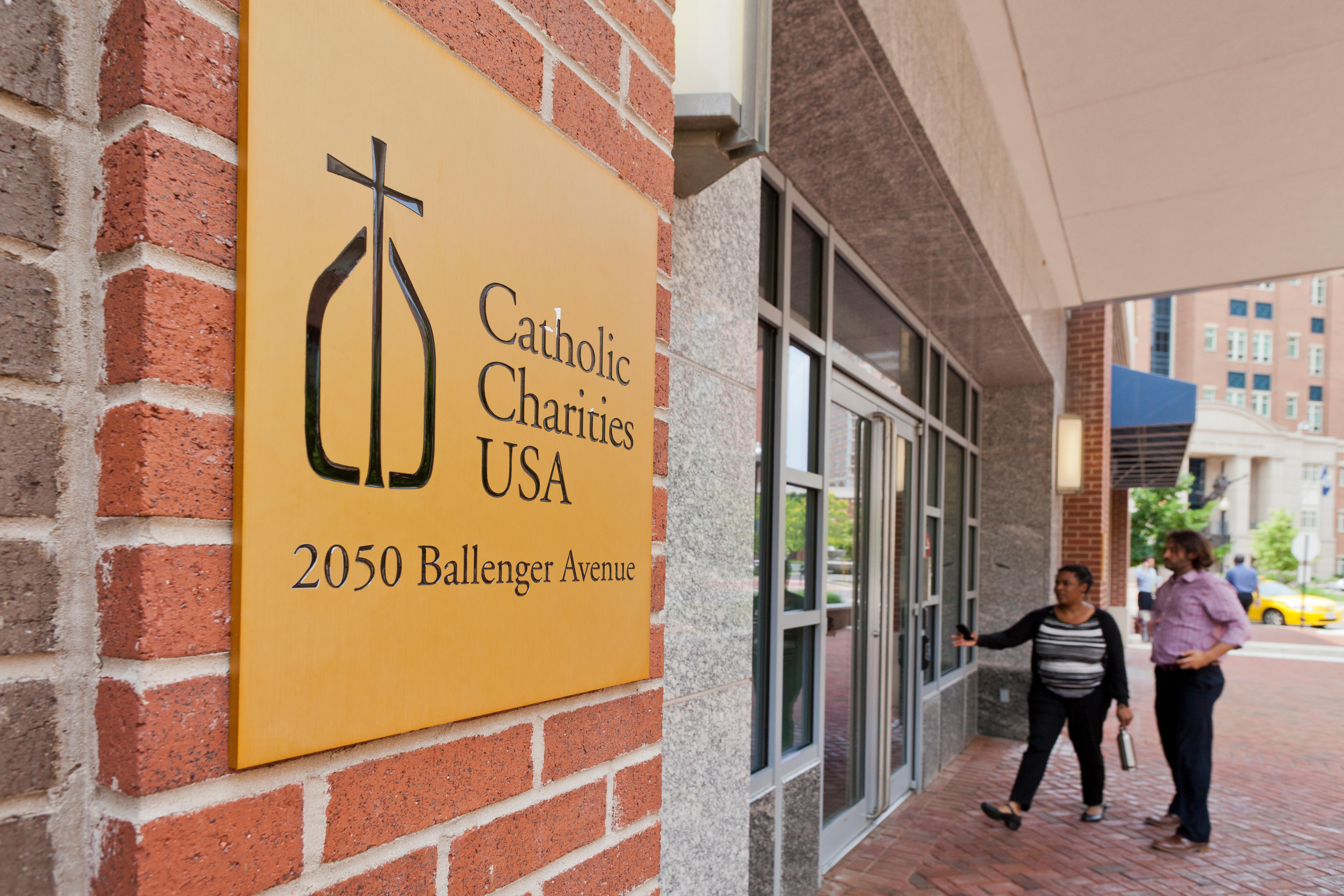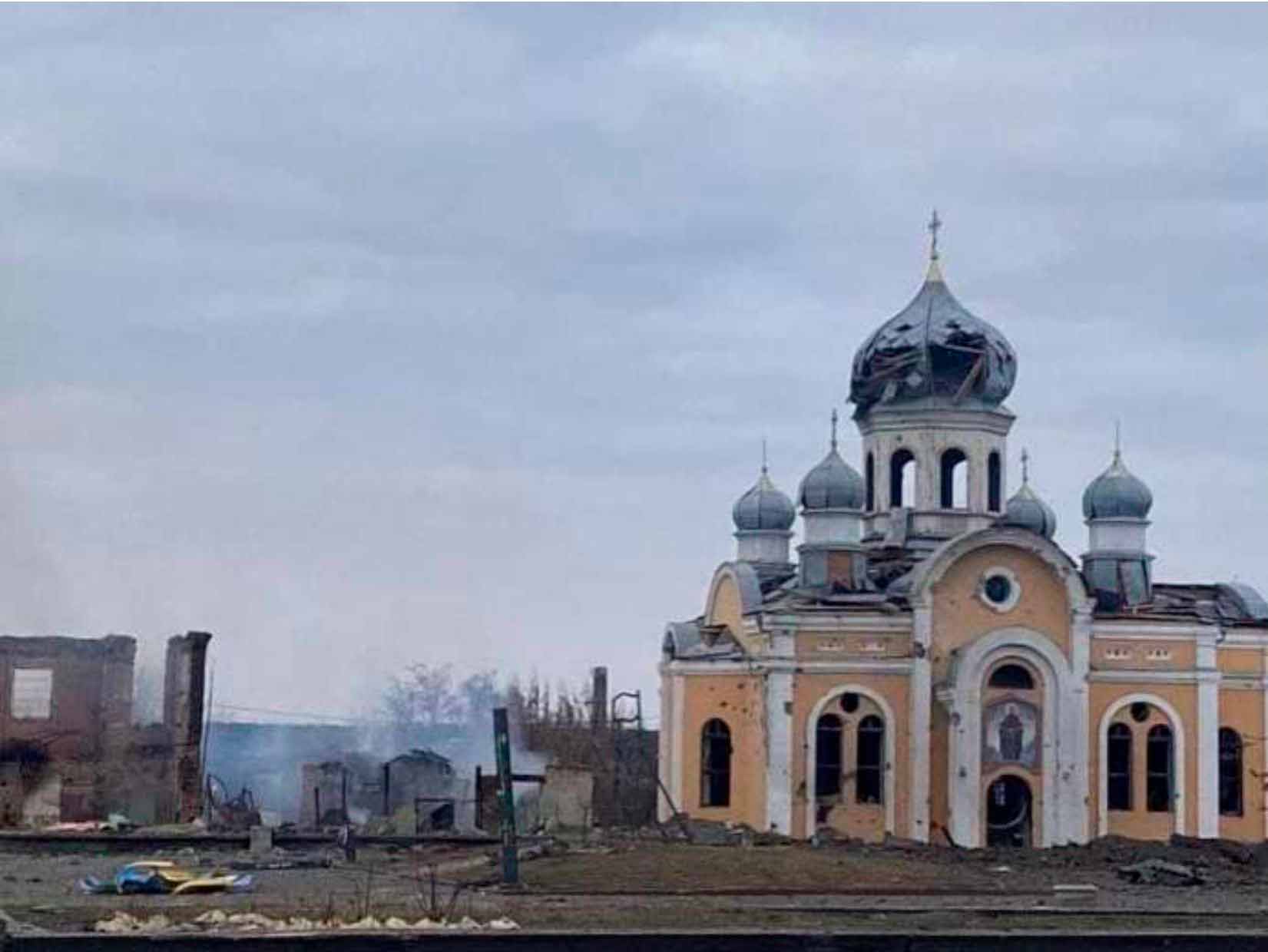An Orthodox priest was executed by Russian forces last month, according to reports from occupied southern Ukraine.
A photograph of Fr Stepan Podolchak, a 59-year-old priest of the independent Orthodox Church of Ukraine, circulated on 15 February with the announcement: “Tortured to death by Russian soldiers.”
Podolchak lived in the village of Kalanchak, in the Kherson province, which is under Russian occupation. According to witnesses, Russian soldiers had broken into his home on 13 February and taken him to an unknown location. On 15 February, his wife was “invited” to identify the body of her husband.
Svitlana Fomina, the head of the Kalanchak village council, suggested that the Russian troops killed him because he “held liturgies in Ukrainian and prayed for Ukraine”.
 The image of Fr Stepan Podolchak circulated announcing his death.
The image of Fr Stepan Podolchak circulated announcing his death.
(Public domain.)
Podolchak’s was not the first alleged murder of a Ukrainian clergyman since the Russian invasion on 24 February 2024. In a statement on the second anniversary of the invasion, Robert Rehak, chairman of the International Religious Freedom or Belief Alliance, said that 30 Ukrainian priests had been killed by Russians in and 26 were imprisoned.
According to Yevhen Zakharov, director of the Kharkiv Human Rights Protection Group, which documents Russian war crimes against Ukrainian religious communities, the fate of the abductees is largely unknown. Most are priests of the autocephalous Orthodox Church in Ukraine or pastors of Protestant churches.
Those who managed to return to government-controlled territory of Ukraine have reported being subjected to severe torture.
“In Berdiansk, on 16 November 2022, Russians took away two priests of the Ukrainian Greek Catholic Church. They were accused of allegedly setting up a weapons depot for local partisans. Even Pope Francis appealed to the Russian authorities regarding the fate of these priests, but his appeal was ignored," Mr Zakharov said.
Speaking to The Tablet, Maksym Vasin, executive director of the Institute for Religious Freedom which documents testimonies of clergy who have survived torture in Russian captivity, said they most often mentioned three motives for their treatment. These were their captors’ hatred of Ukrainian identity (origin, language, citizenship), religious persecution of denominations that do not belong to the Russian Orthodox Church, or their refusal to collaborate with Russian religious centres.
“Several Ukrainian religious figures testified that Russian prison officials tortured them or treated them inhumanely for refusing to be forced to learn the anthem of the Russian Federation,” Mr Vasin said.
“Ukrainian religious leaders were subjected to beatings, arbitrary imprisonment, torture and even attempted rape by the Russian military or representatives of the occupation authorities for refusing to collaborate and submit to Russian religious centres.”
He continued: “The Russian military and representatives of the special services could not believe that Ukrainian religious leaders, especially military chaplains, could be independent, not connected with the Ukrainian special services.”
Russia has been accused of sponsoring the attacks on Ukrainian religious leaders by Russian-backed separatists in the Donbas and Crimea – particularly the self-styled Russian Orthodox Army and the Cossack Army – since 2014.
A report last November by the Evangelical charity Mission Eurasia, titled “Faith Under Fire”, said that relations between religious organisations and the occupation authorities had deteriorated dramatically since February 2022, from “get-to-know-you” talks to the seizure of buildings, arrests and deportations.
According to the report, serious repression of religious minorities began in the summer of 2022.
“Russian soldiers started to raid prayer houses, often during church services. During the raids, they conducted searches, made lists of the church members who were present, and collected their personal and biometric information, which they used for further surveillance. After such raids, the faithful were forbidden from conducting any activity in their religious community’s premises.
“In seized church buildings, occupation authorities sawed off crosses and used the premises to house their administrative institutions.”
Several Ukrainian organisations have documented other war crimes, particularly the destruction of religious buildings of various denominations.
Ruslan Khalikov, a religious scholar who heads the Religion on Fire project to record Russian war crimes in Ukraine for the Workshop of Academic Religious Studies, said that more than 556 religious buildings have been harmed – 8.5 per cent of them destroyed and 44 per cent moderately or severely damaged – by the invasion, largely from untargeted Russian shelling. The project has documented each case to be taken to Ukrainian and international courts.
Mr Khalikov told The Tablet that some of the destruction was the result of mass shelling by Russian troops, but there had been several instances when Russian forces had directly shelled religious buildings.
Either would constitute a war crime: it is illegal to target religious buildings, and also to target civilian settlements with ordinance with a large diameter such as MLRS (Multi-Launch Rocket Systems) or prohibited weapons (such as cluster bombs) – which affect damage non-military and heritage assets.
“There are cases when a church is the only building, it stands in the middle of a field. And there is no nearby object that the Russians could aim at and miss. We also know that there is Russian intelligence working: people saw drones flying over the church, and then there was a hit,” Mr Khalikov said.
“Thirdly, if the building is on maps, as is the case with older churches, the Russians must have known that. The church is an object protected by international law, they should have avoided shooting at it.”
International law forbids both attacks on religious buildings and their use for military purposes, but Mr Khalikov said Russian troops had used churches as bases and firing positions.
“In the liberated territories, we have repeatedly recorded that they used churches as headquarters, weapons depots, the bell tower could be used as sniper points. Such cases occurred in several regions where the Russian army entered, so there is a systematic policy in this regard,” he said in comments at the end of January.
Most of the churches destroyed or damaged in the war – 272 buildings – belong to the Ukrainian Orthodox Church, historically subordinate to the Moscow Patriarchate.
“In defence of religious values, Russians hit Orthodox churches first and foremost, without much care for their integrity,” said Mr Khalikov.



 Loading ...
Loading ...